Before we start, let’s set some things straight. I’m not a Sanja Matsuri expert, and there’s many people in America who can tell you about the meanings and their experiences of Sanja Matsuri and the taiko of the festival like Wakayama Shachu (and Suzuki Sensei who has greatly influenced the North American taiko world directly and indirectly with edo bayashi music) and Nihon Taiko Dojo (although I cannot find an English website for Tosha sensei’s group, but I bet you know someone’s who’s studied with him or one of his students), 2 of the most anticipated performers amongst taiko nerds. Miyamoto Unosuke Shoten is also hugely responsible for keeping the festival going with their the main mikoshis and more!
I was so intimidated to post something about Sanja Matsuri because it’s highly valued by taiko people that it took me 2 months to muster the courage.
Hilariously, here I am worrying about being specific enough that I forget that many of y’all don’t play taiko and skip over these parts anyways. Oh well, I’ll continue to quiver as a small small taiko player in this biga$$ world. (PSA, there’s less taiko jargon towards the end of this post.)
Key words for now:
Matsuri: festival
Ohayashi: accompanying music
Edo bayashi: traditional Tokyo festival music played at Sanja Matsuri with 300 years of history
Mikoshi: portable Shinto shrine
Shinto: a historical belief system. Some (like Westerners) consider this a religion
Geinoh: Japanese folk performing art form (*taiko peeps, Yui Kamiya is trying to push this word to become as synonymous as the word "taiko." Put it in your word bank if its not already there!)
So this post isn’t to teach you about the history and things you can read in more depth online by clicking these sites. Like this youtube vid I refer everyone to who’s never heard of the festival before:
Dirty summary, it’s a 3 day festival dating back to about 1312 in Asakusa, a historic neighborhood of Tokyo. If you’ve never been to Asakusa, think blast-from-the-past tori gate with a huge lantern above welcoming you down a long row of vendors leading to a massive, beautiful temple. This Buddhist temple is Senso-ji. BUT, to the right is a small Shinto shrine, where Sanja Matsuri begins and where the mikoshi gets blessed to then be paraded down the streets of Asakusa. Different “religions,” but legend has it…omg just go read one of those links.
I also put “religions” in quotes because it’s just a way of life for Japanese people today that was defined as a religion because westerners need labels.
As a taiko player, I’ve watched videos, heard stories, and studied music from and inspired by this longtime festival. I had groups I wanted to see, and music I wanted to hear. I didn’t think this opportunity would ever come, so everything felt so precious. My family was visiting at the time too, so I felt even more determined to experience and see everything.
Life lesson #22 Sometimes, less planning leads to what you’re searching for (something I greatly struggle with)!
We were unable to see the first day of dances, processions, and of course mikoshi, but we made it for Saturday's festivities! We were shoulder to shoulder with people to one side of Sensoji temple, clamoring over one another to see the mikoshi as ohyashi filled the air from all directions. I was nervous that we were missing things, and I felt unprepared because I didn’t know how to plan for this.
However, my sister, too smart for us, left the crowd and went to the actual Asakusa shrine and found not only space, but the stage with Wakayama Shachu who performed Edo Bayashi and Kagura (a Shinto ceremonial dance).
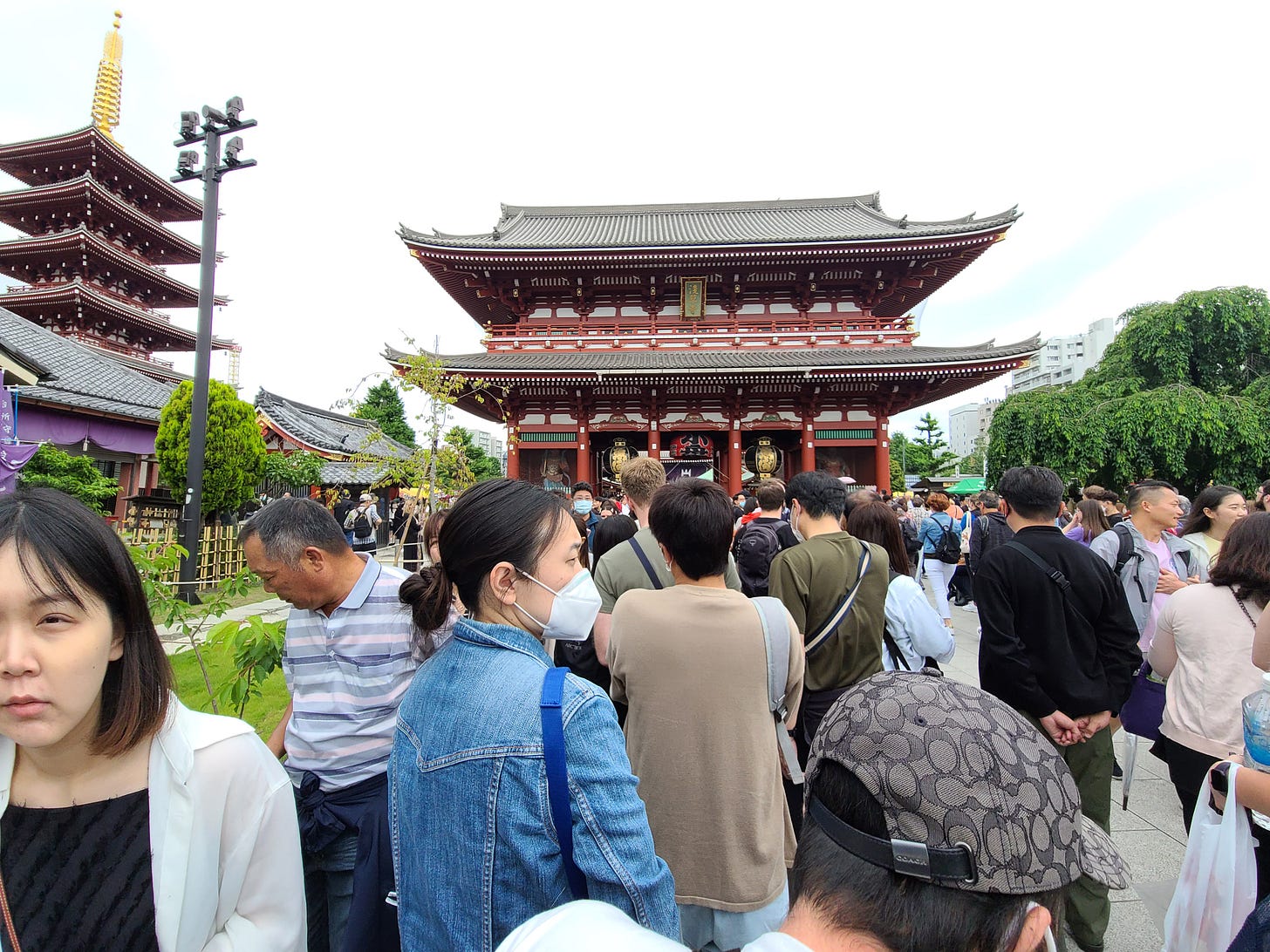
It was exactly what I had heard from my teachers. Drunk, loud energized Japanese people carried beautiful, heavy mikoshi on their shoulders shouting with thousands of people watching and cheering. While that’s going on, maybe 2 people would stop to watch edo bayashi being played by the incredible Wakayama Shachu masters who have put their lives into this craft. As a foreigner, I was still in disbelief how casual everything was, as I hold these masters at the highest regard.


Also funny to think that I was so nervous my family and I would miss the mikoshi, only to end the day having trouble escaping from them, even in the alleyways as we searched for our bus stop. PS, there are over 100 mikoshis carried by different neighborhood associations. It would have been impossible to not run into them.
Life Lesson #1: All the alleys are streets.
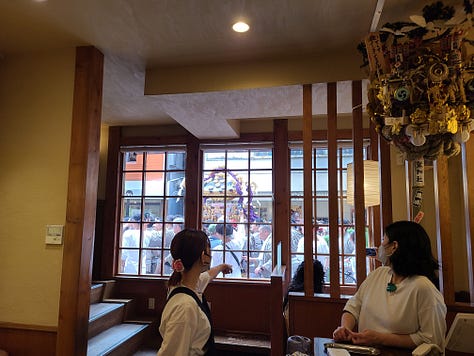

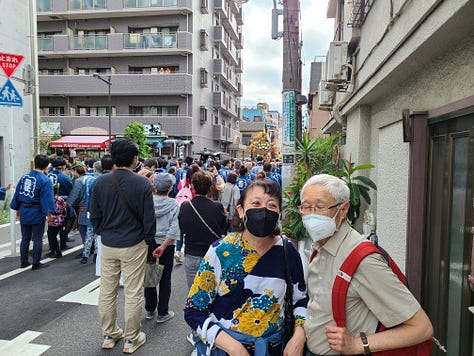
On the 3rd day Nihon Taiko Dojo played in their classic yellow happi with Tosha sensei on the classic cannon ping-ing away. Fortunately on this day, my friends Ai chan and J.D.(knowledgable Taiko and Geinoh people) were with us and could explain more about what was going on.

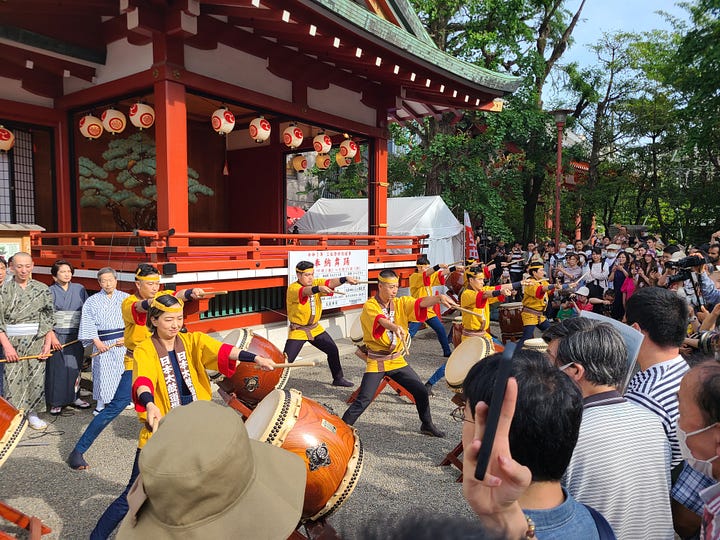
Changing topic, I was recently interviewed by a college friend who is a vtuber named Kuro Getsumai about my experience so far in Japan studying taiko. Vtubuing is virtual youtube with an avatar entertainer. You can check out the interview here.
She asked why I'm so fascinated by omatsuri as a taiko player, and it’s something I’m still thinking about. I recently saw a film by Mile Nagaoka, who directs documentaries filming townspeople in Japan, some of which focused on Geinoh. In his recent film "Their Beat Must not Be Stopped," focusing on Toshima (a region in Tokyo), and the work that is put into each critical component of their matsuri.
Mile san asked a critical question: "Why are matsuri important?" In the film, Ito san (a curator for the board of education) replied saying that matsuri is the only time that the historical time period, the people that are here now, and the land comes together.
The film also faced questions of how to continue the traditions and festivities as many moved out of the town. This reminded me of my own upbringing with the matsuri of my town, "Ginza Holiday," a summer festival in Chicago at the Midwest Buddhist Temple that celebrates Japanese and Japanese American heritage. As a descendant of a family involved in the festival, I've been faced with the pressure of reliance to continue the festival.


Sometimes I ask myself what would happen if we stopped. Why would it be a shame? Going back to this idea, it's the only time we can reflect on our historical past, the people that are here today, and the land we exist on is something worth preserving. The time period is a way to preserve the history and struggles of our ancestors of the particular region and what was happening during that time. The people today, as Yui Kamiya (and Shun) have said, it’s also the time that we can check on people to gather and see how they're doing. It brings the community together and allows us to check on each other. And the land, well the environment is always changing, as should the festival to not match, but rather respect it. And as a performer at this Chicago festival, this is the spirit I hope to perform with.



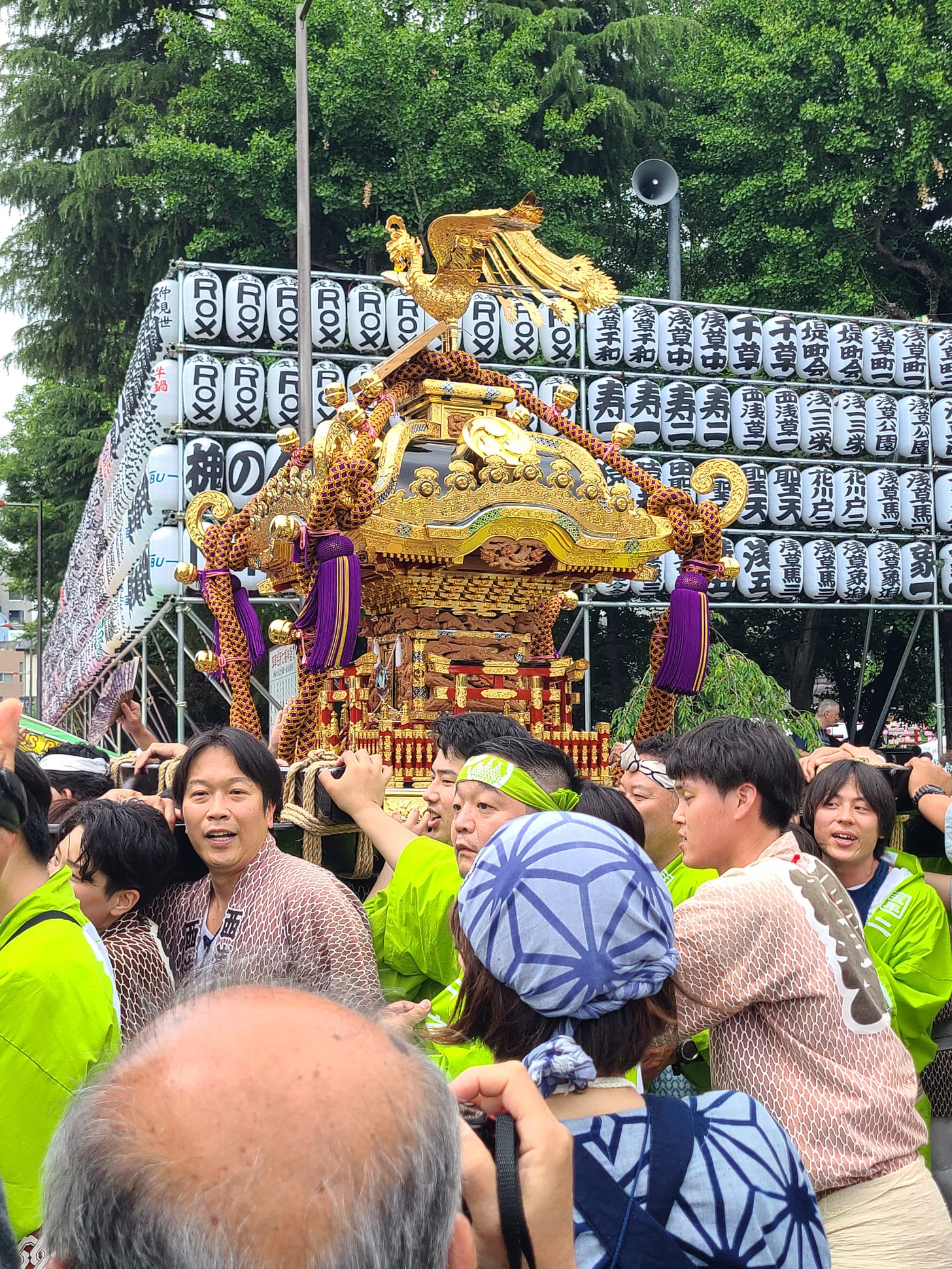

Thank you for mentioning me in your writing! Love that I recently discovered your substack :)